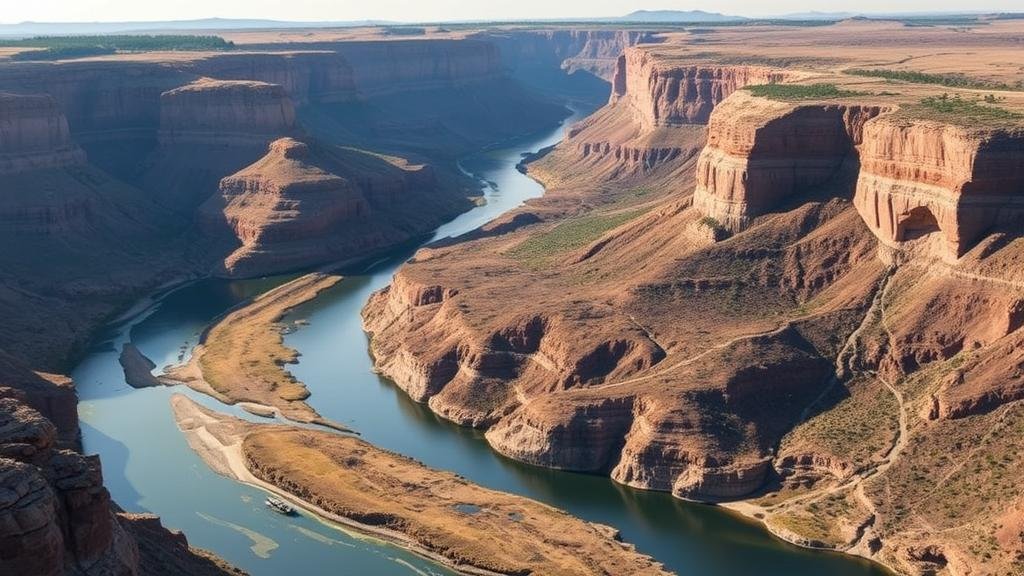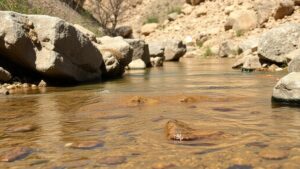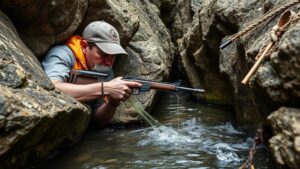How to Find Gold Deposits Along Meandering River Bends
How to Find Gold Deposits Along Meandering River Bends
Gold prospecting can be an enticing venture, especially when conducted along the natural pathways of rivers. Understanding the behavior of water flow and sediment deposition can significantly enhance the chances of discovering gold deposits. In this article, we will explore the techniques and strategies necessary to identify potential gold-rich areas, specifically focusing on meandering river bends.
The Science of River Bends and Gold Deposition
Meandering rivers are characterized by their winding paths, which create various features that can influence gold deposition. As water flows, it erodes the outer bank of the bend where the current is strongest, while simultaneously depositing sediment on the inner bank, where the flow is slower. This process creates the ideal conditions for heavier materials, like gold, to settle.
- The outer banks experience erosion, leading to the exposure of larger rocks and gravel, potentially containing gold.
- The inner banks build up sandy and silt deposits, which may cover finer gold particles, making them less visible.
Identifying Key Locations for Exploration
When prospecting along meandering rivers, certain locations are more promising than others. The following features are critical to observe:
- Crevices and Cracks: Areas with crevices may trap gold particles as they are carried downstream.
- High-Pressure Zones: Locations where the water flow constricts will often lead to higher concentrations of heavier materials.
- Debris Piles: Natural debris like fallen trees or rocks can divert water flow, creating sediment traps.
Techniques for Gold Prospecting
Once promising locations are identified, various techniques can be employed to extract gold from the riverbed:
- Panning: Using a gold pan allows for the separation of gold from other materials through careful washing.
- Sluicing: A sluice box enhances the panning process by using a series of riffles to capture heavier materials as water flows over them.
- Dredging: For deeper deposits, suction dredges can be used, but require careful consideration of local regulations and environmental impact.
Real-World Case Studies
Several regions renowned for gold prospecting have demonstrated success along river bends. Klondike region in Canada is famously known for the gold rush driven by discoveries made in meandering river systems. Similarly, the Sierra Nevada mountain range in California features numerous rivers where amateur prospectors often find gold along the bends.
In each case, understanding the terrain and river dynamics proved crucial. For example, miners in the Klondike utilized natural features such as river bends to maximize their picks and pans effectiveness, leading to successful strikes as they capitalized on the natural energy of the flowing water.
Environmental Considerations and Ethical Prospecting
While the pursuit of gold can be rewarding, it is vital to balance those efforts with environmental responsibility. Disturbing riverbeds can have significant ecological implications, so prospectors should adhere to best practices:
- Obtain necessary permits and comply with local regulations.
- Use methods that minimize disruption to the river ecosystems.
Actionable Takeaways
Finding gold along meandering river bends is a blend of science, strategy, and environmental consciousness. Prospective miners should focus on:
- Identifying key locations such as inner and outer bends, and areas with natural obstructions.
- Employing effective methods like panning, sluicing, and environmentally responsible dredging.
- Learning from historical case studies to understand the behavior of gold deposition.
By incorporating these strategies, gold prospectors can improve their chances of success while fostering an appreciation for the natural environments they explore.



